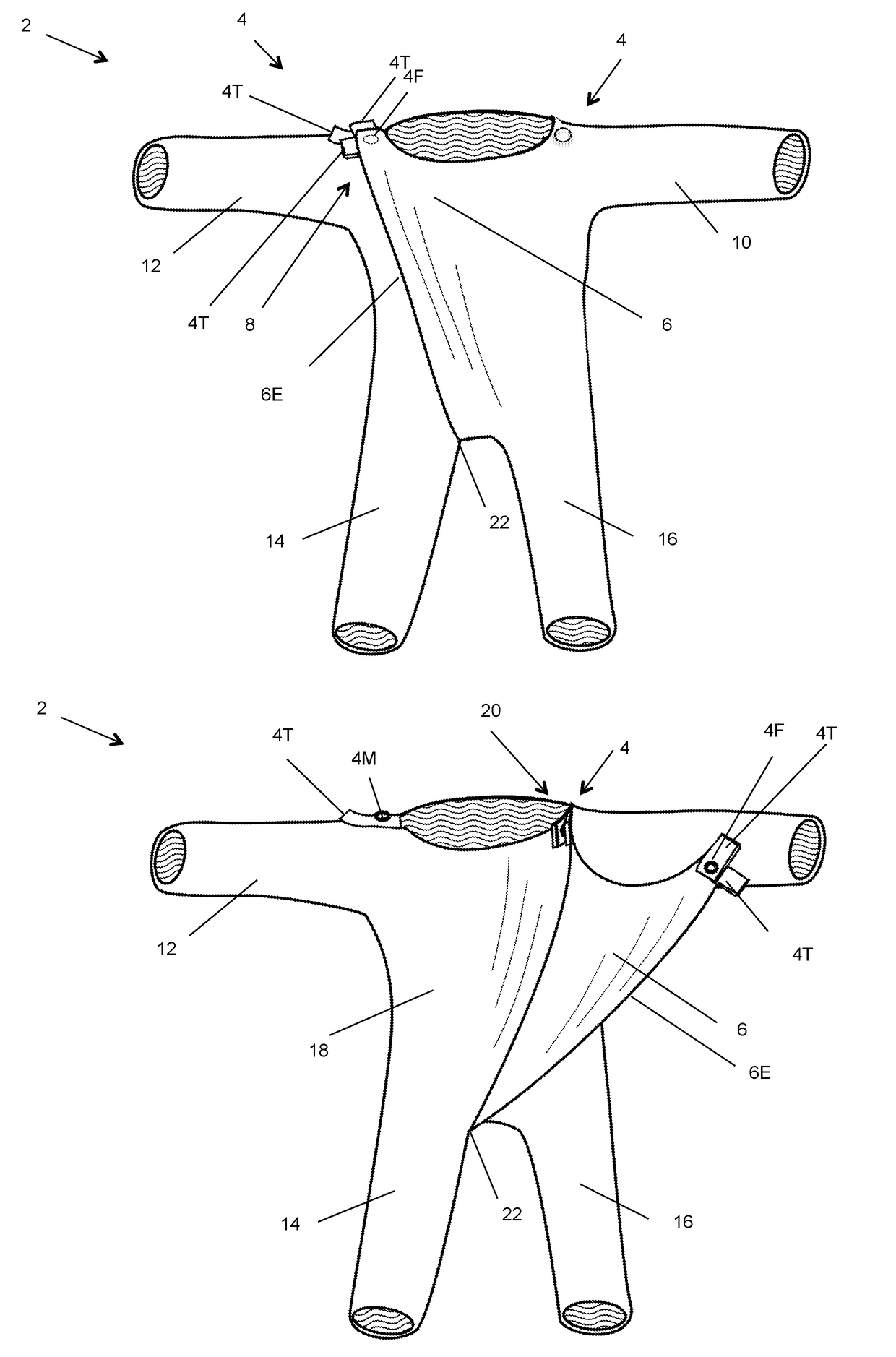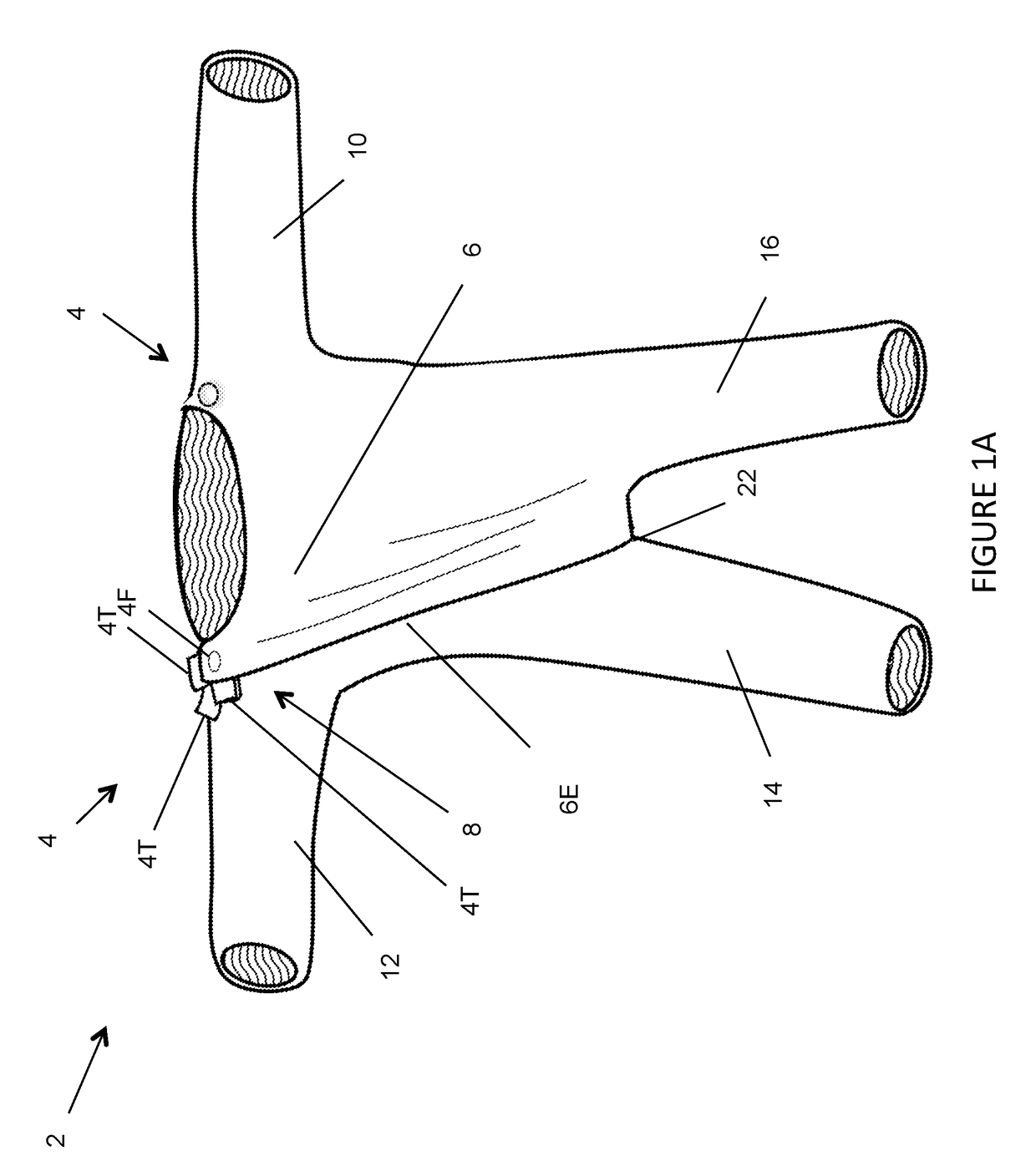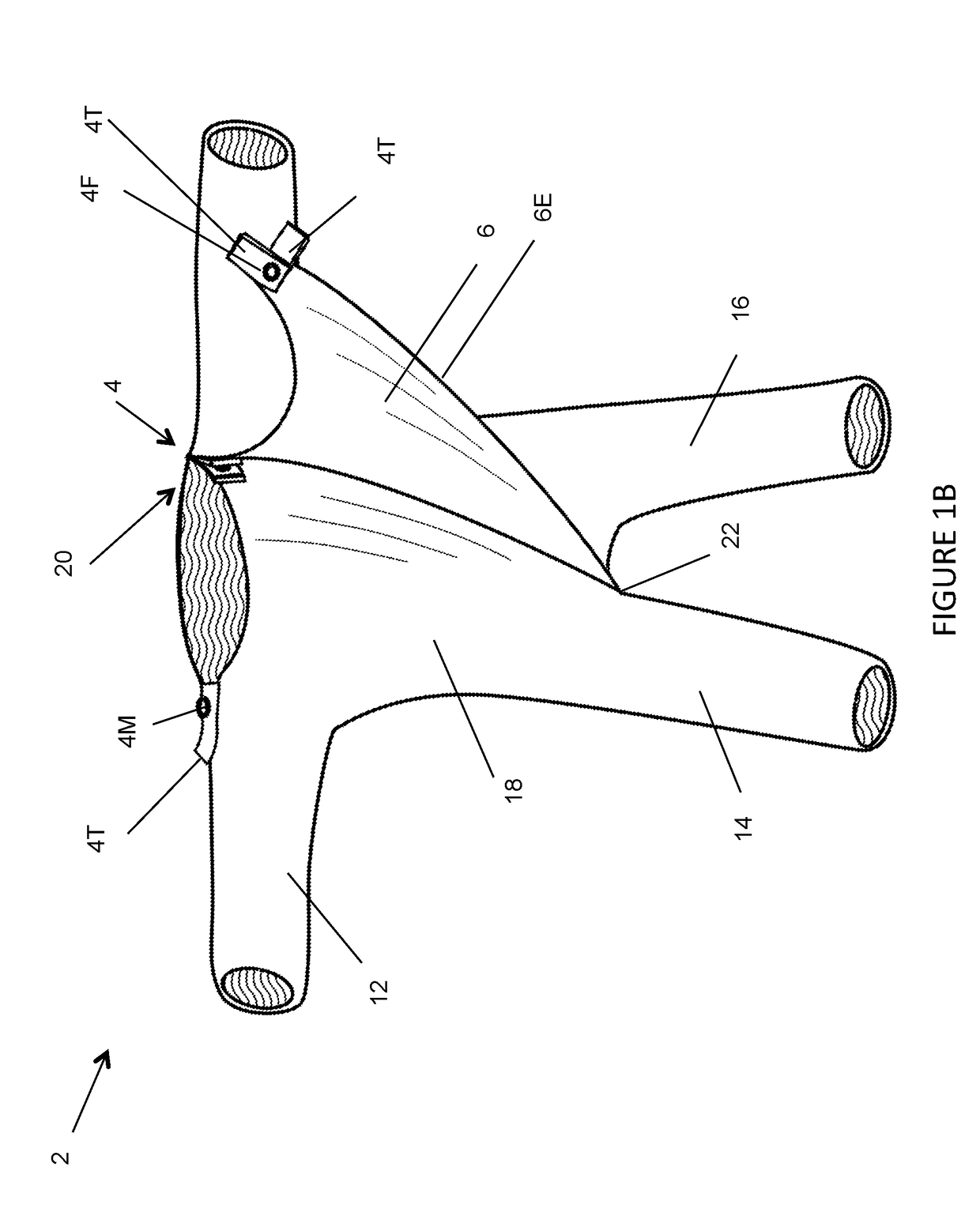Clothing selectively enabling skin-to-skin contact
a skin-to-skin contact and clothing technology, applied in the field of clothing, can solve the problems of not being able to quickly and easily expose the ventral surface of the infant, the difficulty of unpredictability of the life outside the womb, and the difficulty of preparing the infant for skin-to-skin contact,
- Summary
- Abstract
- Description
- Claims
- Application Information
AI Technical Summary
Benefits of technology
Problems solved by technology
Method used
Image
Examples
Embodiment Construction
[0049]Referring now generally to the Figures and particularly to FIGS. 1A, 1B, 1C and 1D, a first preferred embodiment the invented garment 2 (hereinafter, “the first design”2) includes a snap assembly 4 that detachably fixes an outer panel 6 at an upper right shoulder point 8 of the first design 2. As shown in FIG. 1B and FIG. 1C, each snap assembly includes a male snap element 4M and a female snap element 4F, wherein each male snap element 4M presents a lame snap post that is sized and centrally positioned to fit into a centrally positioned receiver of a female snap element that is undersized to form a friction fit with a male snap post.
[0050]Optional tabs 4T are each optionally dedicated and separately attached to a single male snap element 4M and a single female snap element 4F. An optional left sleeve 10 is positioned to extend along and partially enclose a left arm of an infant wearer's body (not shown); an optional right sleeve 12 is positioned to extend along and partially e...
PUM
 Login to View More
Login to View More Abstract
Description
Claims
Application Information
 Login to View More
Login to View More - R&D
- Intellectual Property
- Life Sciences
- Materials
- Tech Scout
- Unparalleled Data Quality
- Higher Quality Content
- 60% Fewer Hallucinations
Browse by: Latest US Patents, China's latest patents, Technical Efficacy Thesaurus, Application Domain, Technology Topic, Popular Technical Reports.
© 2025 PatSnap. All rights reserved.Legal|Privacy policy|Modern Slavery Act Transparency Statement|Sitemap|About US| Contact US: help@patsnap.com



